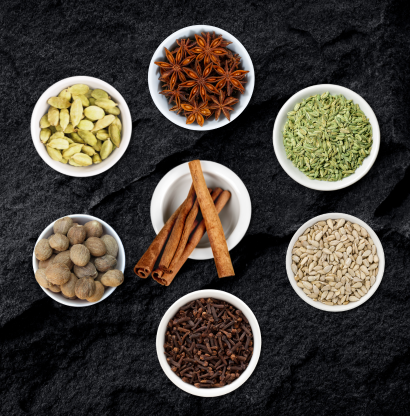Spices have been an integral part of culinary traditions around the world, transforming ordinary dishes into extraordinary feasts. Among these culinary wonders, Curry Leaves stand out as a fragrant and flavourful herb that adds a unique touch to various cuisines. Let's delve into the world of curry leaves – their origins, benefits, and versatile uses in different cuisines, along with tips on incorporating them into your home cooking.
Origins of Curry Leaves:
Curry leaves, scientifically known as Murraya koenigii, are native to South Asia but have found their way into the hearts of chefs and home cooks worldwide. Widely used in Indian cuisine, curry leaves have a distinct aroma that enhances the overall flavour of dishes. The small, shiny, dark green leaves are often confused with curry powder, but they bring a unique taste profile to dishes that cannot be replicated.
Health Benefits of Curry Leaves:
Beyond their culinary appeal, curry leaves boast an array of health benefits. Packed with antioxidants, vitamins, and minerals, they contribute to overall well-being. Some notable benefits include:
-
Rich in Vitamins: Curry leaves are a good source of vitamin A, B, C, and E, promoting healthy skin, hair, and vision.
-
Aids in Digestion: These leaves have digestive properties, helping to alleviate indigestion and nausea.
-
Manages Cholesterol Levels: Curry leaves have been linked to reducing LDL cholesterol levels, supporting heart health.
-
Anti-Inflammatory Properties: The compounds found in curry leaves exhibit anti-inflammatory and anti-bacterial properties.
Uses in Different Cuisines:
-
Indian Cuisine: Unsurprisingly, curry leaves are a staple in Indian cooking. They are often tempered in hot oil with mustard seeds before being added to curries, lentils, and rice dishes. This technique, known as "tadka" or "tempering," releases the aromatic oils and flavours of the leaves.
-
Thai Cuisine: Curry leaves are used in Thai cuisine, particularly in southern Thai dishes. The leaves are added to soups, stews, and stir-fries to impart their distinctive citrusy and slightly spicy flavour.
-
Sri Lankan Cuisine: In Sri Lanka, curry leaves are a key ingredient in many curry dishes, providing a subtle flavour to coconut-based curries and rice preparations.
How to Use Curry Leaves at Home:
Now that you're inspired to explore the world of curry leaves, here are some tips on incorporating them into your home cooking:
-
Tempering: Heat oil in a pan, add mustard seeds, cumin seeds, and curry leaves. Once they splutter, add the tempered mix to your curry or dal for an authentic touch.
-
Infusing Oils: Make aromatic curry leaf-infused oils for drizzling over salads, soups, or as a finishing touch to roasted vegetables.
-
Chutneys and Sauces: Blend curry leaves with other ingredients like coconut, green chilies, and tamarind to create delicious chutneys or sauces.
-
Tea Infusion: Make a soothing tea by infusing curry leaves in hot water. This can be a refreshing and health-boosting beverage.






